Related Tags
An oral history of the Fender Stratocaster
We chart the development of an icon of mid-century modern design and hear from the people who witnessed its development and evolution first-hand.

One of the first 50 Stratocasters ever produced, this 1954 is among the holiest of the Holy Grails
This is the insider’s story of the early days of the Stratocaster, Fender’s solidbody electric guitar that, in 1954, followed the earlier Broadcaster/Telecaster and Esquire into the Californian company’s catalogue. It was a stunning new instrument, sleek and refined where the Telecaster was plain and workmanlike: a beautiful three-pickup solidbody with a clever vibrato system and a curvaceous look. The Strat would, of course, become an industry standard and in its first few decades, stirred up the music of players as diverse as Buddy Holly and Jimi Hendrix.
This oral history of the early Stratocaster comes from the archive of interviews I’ve done over the years for my books about Fender. The people you’ll hear from are: Jeff Beck, who got his first Strat in 1961, sold that, then turned from Lesters to Strats around 1968; Bill Carson, Western Swing guitarist, Fender ‘guinea pig’ in the 50s and, later, Fender salesman; George Fullerton, Fender employee from 1948 to 1970; Dale Hyatt, a Fender salesman from the mid 40s to the early 70s; Karl Olmsted, founder of Race & Olmsted, Fender’s original tool-and-die maker; Don Randall, Fender’s head of sales from 1953 to 1969; and Forrest White, Fender’s head of production from 1954 to 1967.
Beginnings of the Stratocaster
Forrest White
“At the time I started with Leo Fender in May 1954, the production was very low. They had the Telecaster, the Esquire, the Precision Bass. The Stratocaster had been designed, but there was no production yet – the first production run was in October of 1954.
“Each musician who came in the factory had his own idea of how things should sound. Bill Carson said that with the three different bridge sections on the Esquire and Telecaster, there was no way he could get proper intonation; he said there should be a separate bridge section for each string on the Stratocaster. No other guitar had that.”
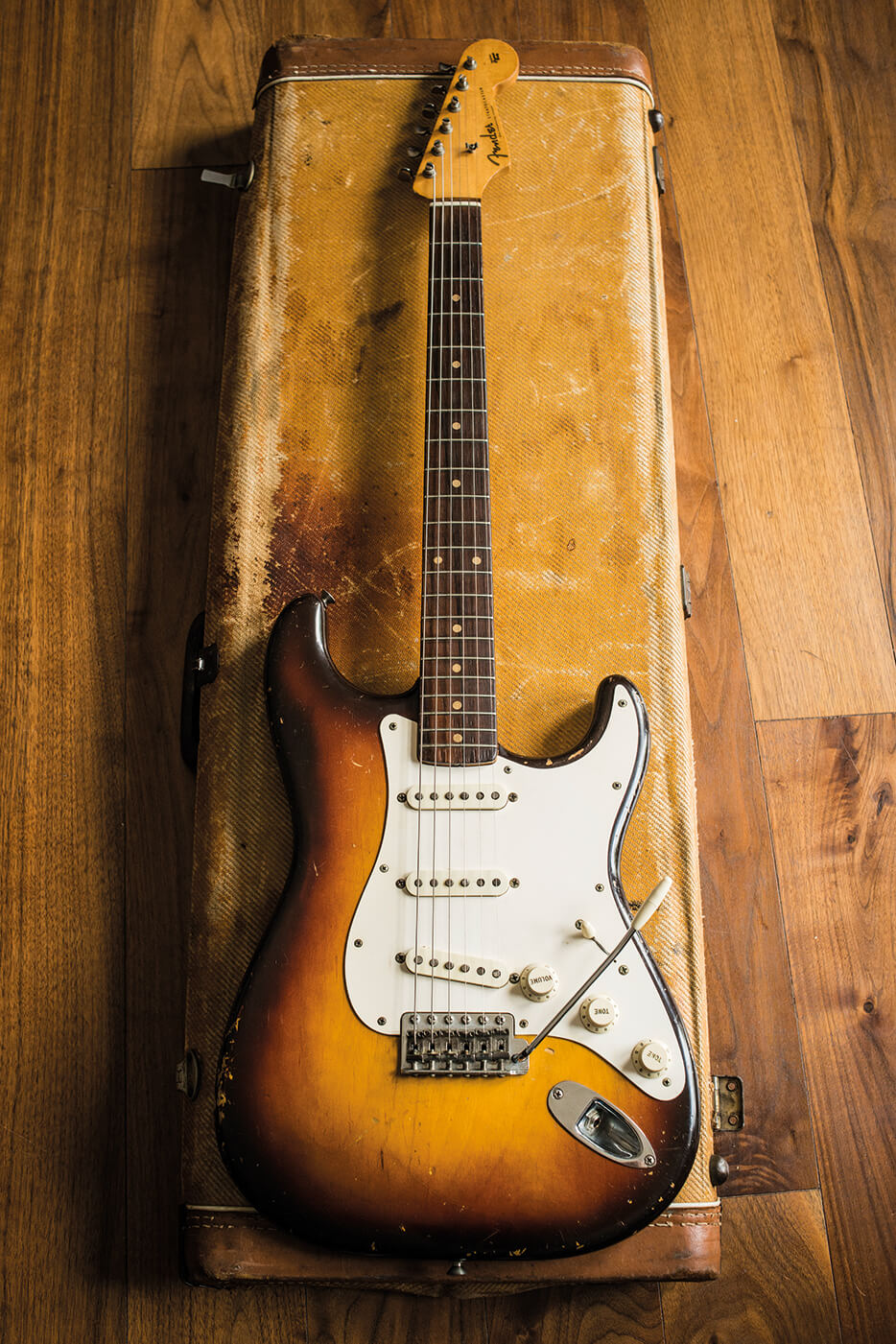
Don Randall
“All the guys want to say I designed this or I designed that, and one of the salesmen, Bill Carson, says he designed the Stratocaster. He really didn’t have a thing to do with it. Freddie Tavares was Leo’s helper in his shop. And the Stratocaster was brought about just as a necessary adjunct to the guitars we had, the Esquire and the Telecaster.
“We needed a fancier guitar, an upgrade guitar. I named the guitars: when the Stratocaster came along, they were talking about putting guys into orbit, so it was Telecaster, then Stratocaster – into the stratosphere.”
Dale Hyatt
“They claim that Bill Carson is the one who invented the Strat. Didn’t happen. They’d be a lot better off to say he had some input and I’m sure he did. Those things are usually the result of a combination of ideas from different people.”
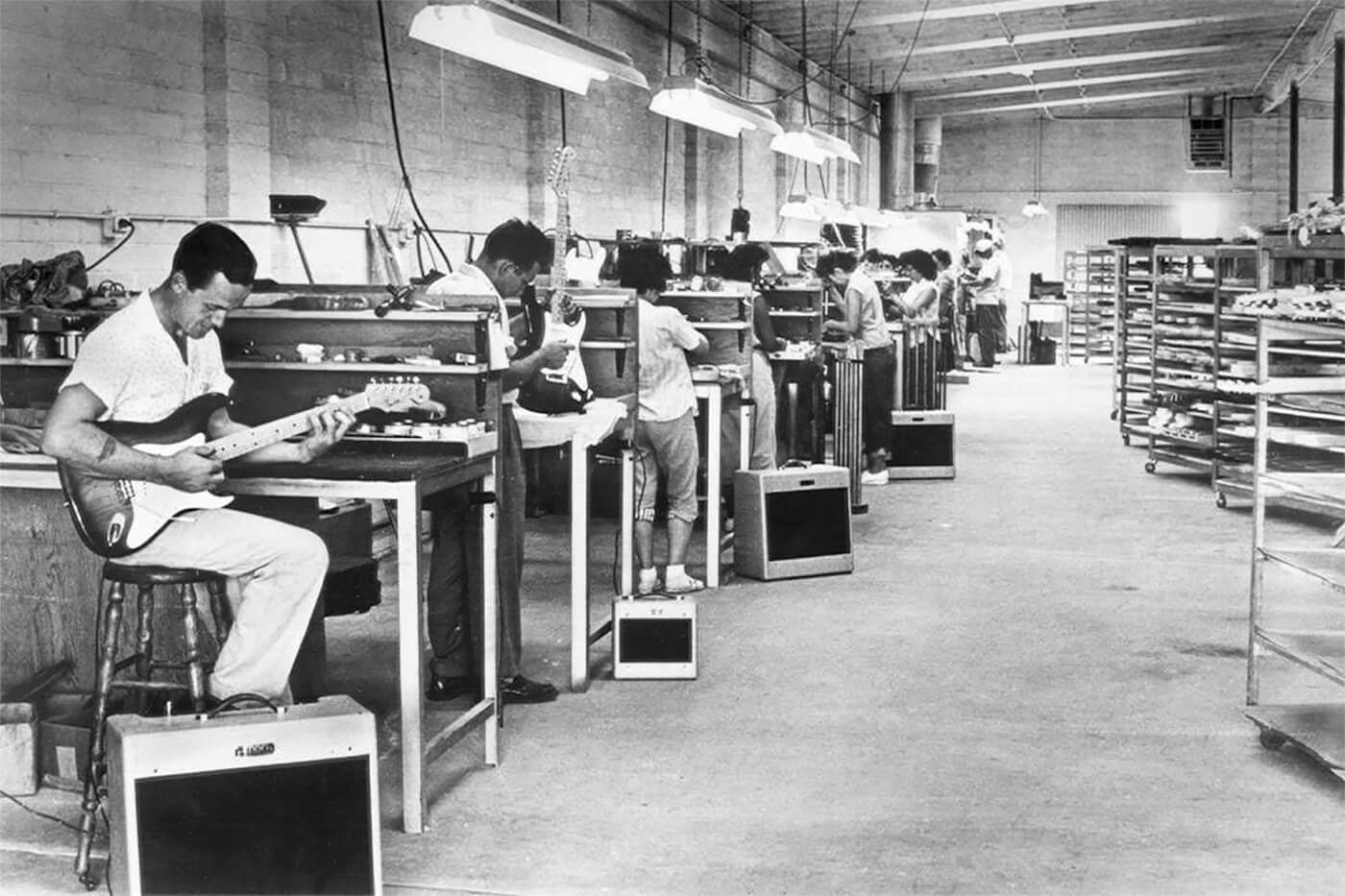
Bill Carson
“I didn’t have the money to buy an amp and guitar outright, so Leo sold me a Telecaster and amp for 18 bucks a month, with the understanding that I would spend a few hours each week as a musical guinea pig. He wrote our agreement on a yellow tablet sheet and stuck it in an old rickety file cabinet and that was our contract.
“I began to have trouble with the Telecaster, because of two strings going over a common bridge. You just cannot intonate that – you couldn’t then and you can’t now. I sawed mine in two and made me six bridges, and pretty clumsily propped up each half section with a striker strip from bookmatches, that little sandpaper grit to help hold it in place. So then I could intonate the instrument and play in tune.”
George Fullerton
“Freddie Tavares came in about the time the Stratocaster was being started, and Bill Carson worked on the Stratocaster quite a bit. I think Freddie did some of the drawings on it and some of the final things. The Stratocaster was in the design idea before we moved from Pomona over to Raymond Avenue, the plans were already on the drawing board, and I think it was March ’53 we moved there. That picture of me on the line was taken at the new building, when the first Strat came out in ’54.
“Bill worked with Leo a great deal, ’specially on pickups, because he liked a certain kind of sound. He would come out when he had time, because he played music so wasn’t available very much. When he was here, he was out working with Leo. Leo’d make something and Bill would take it and try it on the job. So finally, I guess Leo was able to make a pickup that suited Bill’s hearing.
“There were several things about the Stratocaster that Bill liked. Bill claims to be the one that came up with the cutaway, and yet on the other hand, Leo gave Rex Gallion the credit for doing this. Rex was a big man and he complained that the body used to cut into him a lot. Course, Bill had the same idea, but Leo says Rex was the man who came in first. I’d give Bill credit for the pickup and maybe the individual bridge sections.”
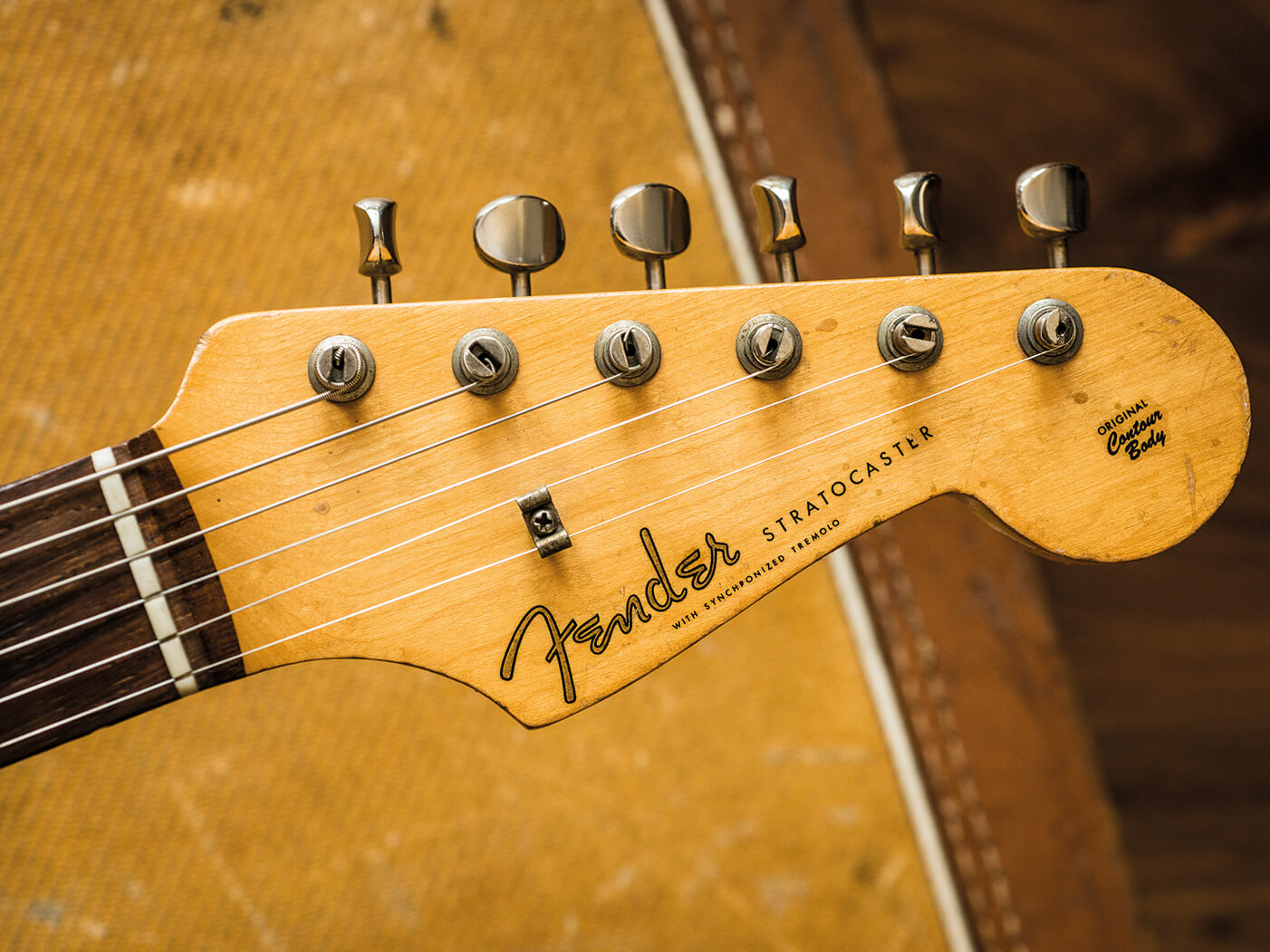
Bill Carson
“I wanted a guitar with six bridges that would adjust vertically and horizontally, four pickups, body contours, a Bigsby-style headstock and a vibrato that would not only come back to exact string pitch after you’d sharped or flatted it, but also I wanted it to sharp or flat half a tone at least and hold the chord.
“And that was tough to do, according to Leo. We modified the Bigsby headstock – too ornate and hard to make – so it wound up much like you’ve seen it for the last several years. The four pickups became overkill and took too much space, so we dropped that to three.”
Original contour body
Don Randall
“Leo found out people complained that the sharp edge on the Telecaster was uncomfortable, so he rolled off that part of the body. He said when you hold it against your body, that sharp edge is kind of cutting in there, too, so he cut it away right there. Far more comfortable.
“You know, the Esquire and Telecaster are pretty ugly guitars when it comes right down to it. Let’s be frank about it, they were plain vanilla. In the days of Gibsons and things with bound necks and purfling, they were pretty ugly guitars. But we thought they were beautiful because we were making money with them. So the Stratocaster was born and the body was changed and the headstock was changed, a little more graceful, a little more lute-ish, by the way, a little more Paul Bigsby-ish, and a few natural changes came about.”
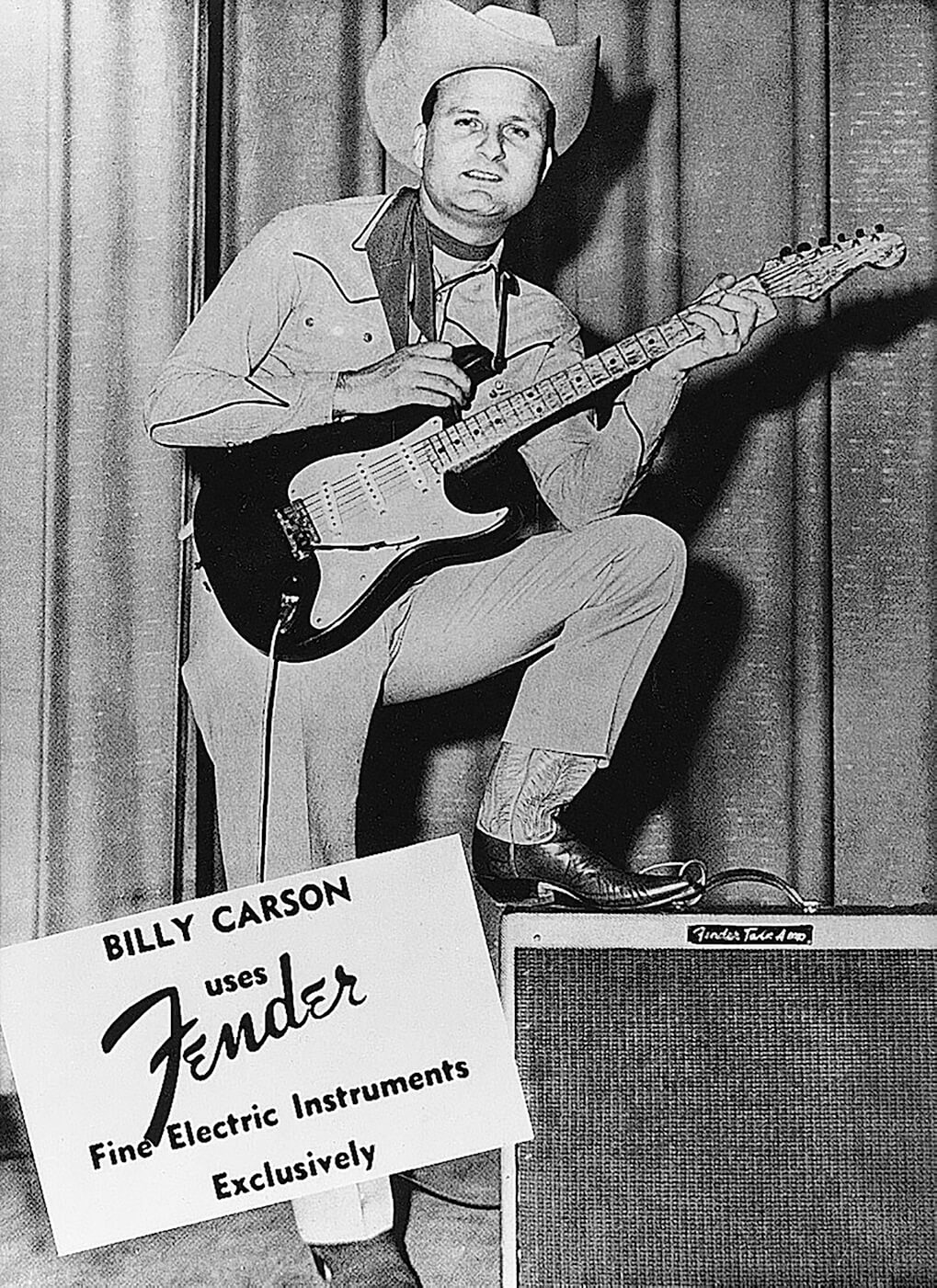
Bill Carson
“Long hours sitting on a stool in clubs and at studios with a Telecaster digging into my ribcage meant I stayed sore all the time from that square edge that it had. Plus, the squared-off lower bout never really felt comfortable to my forearm, so that needed to be relieved.
“I came to work at the shop one morning and Leo and George Fullerton had roughed up four bodies with different contours and body reliefs. I picked out one that was closer to my idea and then a few days later, Leo had a very ugly but very playable guitar. It was at this point that Freddie Tavares came to work part-time for Leo. Freddie was one of the best musicians I have ever known, and just as good at engineering. A very talented man.”
Synchronised tremolo, recessed jack
Don Randall
“The tremolo [Fender’s term for the vibrato] was Leo’s pride and joy. That was his idea from way back when – he was working on a way of bending the strings. It was his design.
George Fullerton
“The first vibrato unit on the Stratocaster was all designed and Bill worked with Leo and some other people – I think Freddie really worked with Leo on this vibrato. It was decided it would be built, and tooling was purchased, parts made. And when that first one came off the line, I grabbed it and it was terrible. Sounded terrible, sounded tinny, wouldn’t sustain sound.

“I rushed down to the lab there and I said Leo – it was all set up for production – I said we’ve got to stop this. That whole thing was thrown out! All the parts, all the tooling, many thousands of dollars. It had to be redesigned, not only to sustain notes, but also to give a solid sound.
“And that’s why the Stratocaster didn’t come out as soon as it should have, even though it was already advertised. There was a lapse between that time until it actually came out, because they were retooling the vibrato.”
Karl Olmsted
“We made several of the tremolo bridges. The little saddle was a problem, we had a heck of a time getting something developed that was practical to make, to mass produce, that worked the way Leo wanted it to. It has little adjustment screws in there to get the height that you need and Leo wanted the string-length adjustment to be exact, because according to him, if you couldn’t get it so many thousandths it was not the right sound. So something that looks simple wound up being quite a development.
“You’d have to keep making a trade-off with Leo. He’d say how he wanted the tremolo base plate and you’d say: ‘Well, we can’t do this – you can’t have it bent that close to a hole and not have it distort.’ The bridge cover was also a lot of work to get something that made him happy.
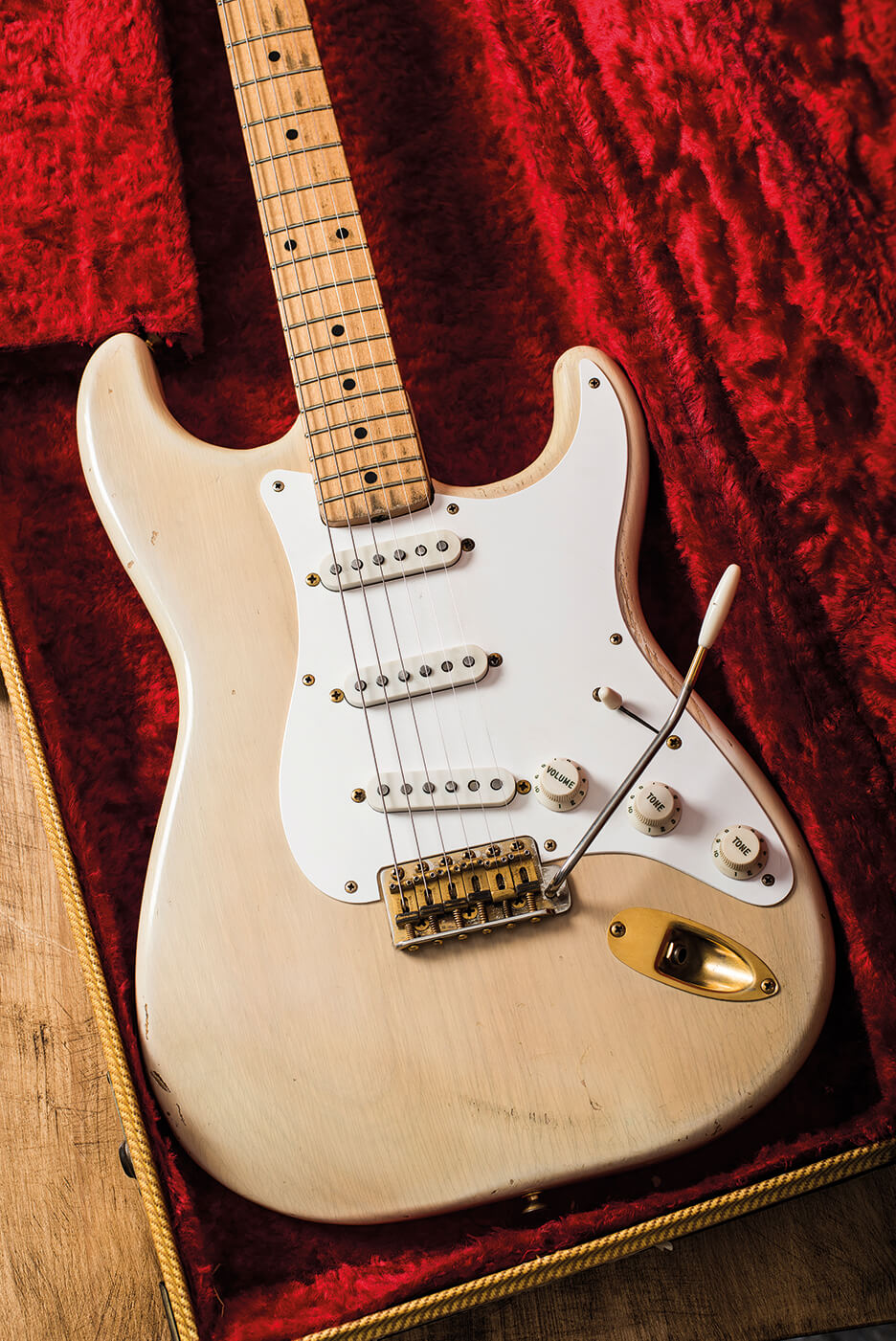
“The sad thing was that all the trouble we went to develop that and make him happy and then 90 per cent of the guitar players took it off and threw it in the trash [laughs]. And to drill the holes through the metal tremolo block, it’s a costly deal to do. So we had some cast, but they didn’t work out and we went back to the drilling.
“The tremolo arm took more development than you’d think. There weren’t many tremolos around and they usually had stationary handles. But Leo wanted one that would do the job, said the guitarist might want to put it out of the way. He would say boy, this angle has to be just right. He’d say: ‘That just don’t feel right.’ And I’d say [laughs]: ‘Who’s gonna know the difference?’”
Bill Carson
“George Fullerton said we’ve wrecked so many Telecaster jacks by guys stepping on the cord, why don’t we put a front-mounted jack on it, so that if you step on the cord it won’t wreck that input jack? So that jack was George’s idea, and a good one.
“Pickup design was a matter of trial and error with magnet and wire size and amount of turns, and since Freddie was a good player and we both needed the same thing, it didn’t take us long to decide what was needed for pickup sound.”
Karl Olmsted
“With the jack, Leo didn’t want something to stick in the side, he wanted something developed that would be a shape that would let the plug come out at an angle, something that could practically be drawn without breaking.”
Glen and Jimi
Dale Hyatt
“When guys like Jimi Hendrix come along, playing all that wild stuff, then we couldn’t build enough of them. As a matter of fact, I think Jimi Hendrix caused more Stratocasters to be sold than all the Fender salesmen put together. And as a matter of fact, he was not one of my favourite musicians [laughs]. I never could get with it. To me, it sounded like a bunch of junk. I have to hear a melody, to be pleasing. I’m still the same today.”
Don Randall
“We had events where we showed our products and when we closed the display there were always hangers-on that wanted to come and jam. We had some terrific jam sessions. One afternoon – this was somewhere in the 60s – there was Thumbs Carllile and some other guys and this fella came in and wanted to know if he could sit in with them. I said: ‘Sure you can, that’s what it’s for.’ I’m telling you, he blew me away. And Thumbs Carllile is no slouch – he’s a good jazz player as well as country.
“So this guy and Thumbs start trying to outdo each other, going wild. One would take a chorus and then the other would take a chorus, this went on about 20 minutes, just killing each other. And the guy was Glen Campbell, practically unknown at the time: he was playing at the Pomona bowling alley. I thought I’ve got to have this guy – I was doing all the artists relations work, too. It was really a one-man show, you know, very tight, very frugal [laughs].
“So I started talking to Glen, said we’d like to have you playing our guitar, what would you like to have? And he said: ‘Oh gosh, I don’t know. I like that purple guitar that Hank Penny had.’ I said: ‘You got it, I’ll get you one.’ I had a purple Stratocaster made for Glen Campbell, got it to him… and I’ve never seen him since and I’ve never heard him play that guitar!
“The next time I saw him, he started getting popular, he was on TV playing a Japanese Teisco guitar, a horrible, awful thing. I never did see him play our guitar. It was really my fault, I should have followed it up.”
The all-time rock guitar

Jeff Beck
“The reason I left school was because of that guitar [laughs]. I mean, that is brain damage when you’re a kid of 14 and you see that. It’s just a piece of equipment that you dream about touching, never mind owning. The first day I stood in Lew Davis or one of them London shops, I just went into a trance and I got the wrong bus home, just dreaming about it, you know?
“It just blew my brains apart, and it’s never been any different since. It’s taken me all round the world and given me everything I’ve got, just that Strat, really. So it is a particular favourite of mine.
“I had a catalogue way before then, which I used to look at, an American one from Fender when it was in Fullerton. It was on a ritzy looking paper, and I thought, ‘These guitars have got to be about a thousand quid.’ And then I found out they were only £147. I thought, ‘Well, I can see myself being able to get hold of the money, if I sold everything I had.’ In the end, I got my first one on HP.
“I got fed up of having to have repairs made to my Les Pauls and I suppose I turned to a Strat in emergency one night and just never went back. This would have been during the Rod Stewart period. I used to play this Les Paul ’59, but I think it was when we did Beck-Ola that I got fed up with it: in the studio, it didn’t sound a lot different to the John Mayall’s Bluesbreakers.
“Lovely sound, but every track ends up sounding very similar. The Strat seemed to respond more to my aggressive playing than the Les Paul did; the Les Paul just sounds dreadful if you start hitting it.
“And the vibrato – it’s like the gear stick on a car, you have to have it. I jammed with Eric once and unbeknownst to me, he handed me his Strat, the black one he uses and I think he has the vibrato arm glued down. He never ever dreamt of using it. And I think with a Strat, that’s the beauty of it. The tonal flexibility of that bar: you can play a phrase and lower it and raise it and wang it. It becomes a whole different ball game with that on.
“I used to have fun balancing the pickup switch in between the two. When I was a kid with my first Fender, I thought I’d fry something up electronically by doing it, but you soon get to know that it’s a simple toggle that spans two holes instead of one, so you’re getting two pickups. I always thought I was doing something irreparable!
“No one else got that sound – and then I heard Gene Vincent records, which had to have that combination. It was so wildly modulated, there’s no way Johnny Meeks could have got that unless it was switched to the front two or the back two pickups. It was Johnny Meeks that turned me on to the Strat in the first place, my chief influence on the Strat.
“No kids are saying: ‘What’s that old guitar, ain’t you got a new one?’ It still looks futuristic, still an unbeatable shape, as is the Tele. I don’t think you can improve on those two guitars, the all-time great rock guitars.”
Another remarkable Fender first
Bill Carson
“So, now I had a good playable guitar that was doing me well for session and club work. Some of the other players, especially the big-box jazz players of that time, they were pretty snide about what they called the electric pork chop, or boat paddle with strings.
“These guys were purists, and for the most part they played big Gibson and Epiphone guitars. But it wasn’t very long before these same guys were after a Telecaster or Strat to get the sound that was rapidly becoming extremely popular.”
George Fullerton
“The first three instruments we came out with, the Broadcaster/Telecaster, the Precision, and the Stratocaster, are still the basic instruments of the world, the most copied, the most desired, the most sold. That must be a record that no one can equal. For me, it’s a feeling of accomplishment, if you can call it accomplishment, because no one will equal that, in any field.
“Can you imagine today how many people made good livings, supported families, on those three instruments? It’s mind boggling to look at all this and know that we were the ones who got the thing rolling. I’m pleased and thankful to have been part of that. And those old instruments, well, it’s amazing what they sell for.”
Read an oral history of the Fender Telecaster here.
